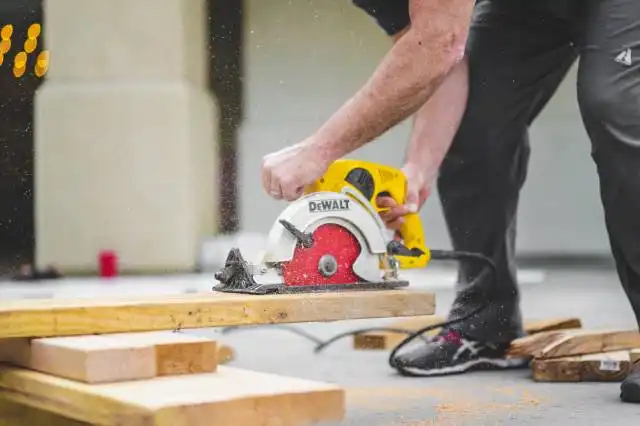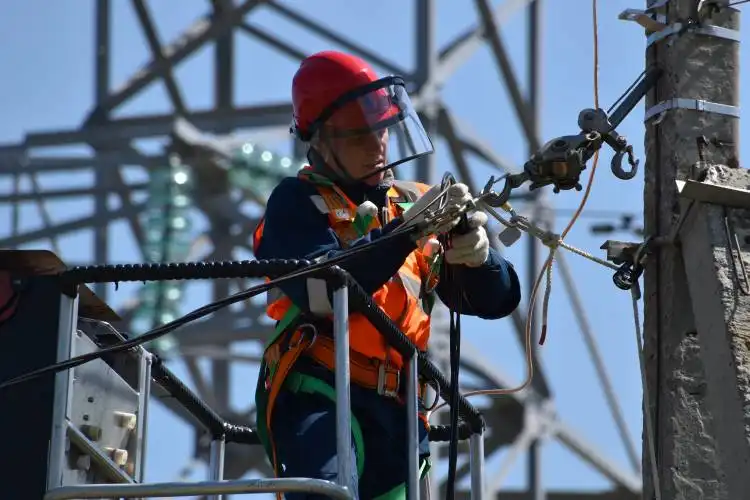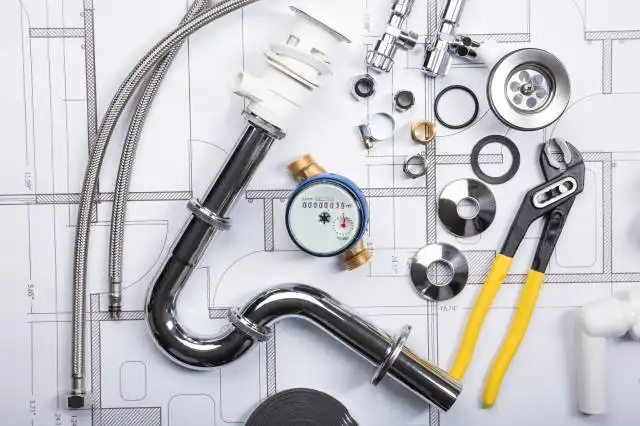Start a Welding Business
Crafting a Future Stitched in Metal: Embark on A Welding Business Adventure!
| Updated


WELDING BUSINESS
Hey there, passionate entrepreneur! Have you ever thought about the beauty and strength created when two pieces of metal are fused together? Welcome to the intriguing world of the welding business, a sector that celebrates craftsmanship and precision. In this realm, your business involves providing services to join metals together by applying heat, creating structures as small as jewelry to as large as bridges. So, put on your goggles, ignite that torch and prepare to meld your way into the entrepreneurial landscape!
Jump to Business Plan
RELATED BUSINESS IDEAS
Browse ALL Construction & Real Estate Business Ideas
Discover Your Perfect Domain
Unlock the door to your online success with our hand-picked selection of premium domain names. Whether you're starting a new venture or rebranding an existing one, the right domain can set the tone for your digital presence. Browse through our curated list, each with its unique potential to enhance your brand's visibility and credibility.
WELDING MINI BUSINESS PLAN
This a quick reality check to help you identify the strengths and weaknesses of your business concept before you dive in.
Expected Percent Margin:
- Gross Margin: 50-60%
- Net Profit Margin: 15-25%
Earnings Expectations:
- Daily Earnings: $200 - $600
- Weekly Earnings: $1,000 - $3,000
- Monthly Earnings: $4,000 - $12,000
- Annual Earnings: $48,000 - $144,000
Actions to Hit Those Numbers:
Equipment and Supplies:
- Initial Investment: At least $10,000 - $30,000 for essential welding equipment.
- Regular Supplies: Maintain a monthly budget for supplies such as gas, shields, metals, rods, etc.
Marketing and Customer Acquisition:
- Local Advertising: Consider on regular print or local online advertisement.
- Online Presence: Establish a professional-looking website and active social media profiles.
Welding Jobs:
- Types of Jobs: Focus on diverse and high-paying jobs like industrial equipment repair, construction welding, and specialized artisan welding.
- Job Volume: Aim for at least 2-3 sizeable jobs per week or numerous smaller jobs.
Cost Control:
- Workshop: Choose a workspace where rent and utilities are affordable. If possible, start from a home workshop.
- Insurance & Licenses: Ensure all necessary licenses are acquired and insurance kept up to date.
Business Operations:
- Operating Hours: Be ready to work based on project deadlines, which may sometimes involve weekend or after-hours work.
- Pricing Strategy: Adopt a flexible pricing strategy based on the complexity and scale of work.
Remember, these are generalized estimates and actual figures will depend on your location, type and quantity of jobs you get, and your overall operating expenses. Always consult with a professional financial advisor for more personalized advice.
NOT WHAT YOU HAD IN MIND? Here are more ideas



Browse ALL Construction & Real Estate Business Ideas
Grab Your Business Website Name
Before you get caught up in the whirlwind of setting up your business, invest in a domain name. It's a small but significant step that lays the foundation for your brand and makes it easier for customers to find and trust you. Just like you wouldn't build a house without securing the land first, don't build a business without securing your domain name.
"Why? Can't that wait?" Here's why it shouldn't
Step 1: Determine if Welding Business is the Right Endeavor
Breakdown of Startup Expenses
Before starting a welding business, it is important to understand the costs associated with getting the business off the ground. Startup expenses can include the cost of equipment, materials, supplies, and other necessary items. Additionally, there may be costs associated with renting or leasing a space for the business, obtaining necessary licenses and permits, and advertising and marketing. It is important to have a clear understanding of all the costs associated with starting a welding business before making the decision to move forward.
Breakdown of Ongoing Expenses
In addition to startup costs, it is important to understand the ongoing expenses associated with running a welding business. These expenses can include the cost of materials, supplies, and equipment maintenance, as well as the cost of utilities, insurance, and taxes. Additionally, it is important to factor in the cost of labor, as well as any other costs associated with running the business. It is important to have a clear understanding of all the costs associated with running a welding business before making the decision to move forward.
Examples of Ways to Make Money
There are a variety of ways to make money with a welding business. Examples of ways to make money include providing welding services to other businesses, selling custom-made items, and offering welding classes. Additionally, it is possible to make money by offering repair services, renting out welding equipment, and selling welding supplies. It is important to have a clear understanding of all the ways to make money with a welding business before making the decision to move forward.
Step 2: Name the Business
When naming a business, it is important to choose a name that is memorable and reflects the type of business. It is also important to make sure the name is not already taken. A good way to start is by brainstorming a list of potential names. Once a list is created, research the names to make sure they are not already taken. Additionally, it is important to make sure the name is available for use as a domain name and social media handle.
When selecting a name, it is also important to consider the target audience. A name that appeals to the target audience can help the business stand out from the competition. Additionally, it is important to make sure the name is easy to pronounce and spell. This will make it easier for customers to find the business online and remember the name.
Once a name has been selected, it is important to register the business with the state and obtain a trademark. This will protect the business name and ensure that no other business can use the same name. Additionally, registering the business with the state will make it easier to open a business bank account and apply for business licenses.
Finally, it is important to create a logo for the business. A logo can help customers recognize the business and create a sense of brand identity. Additionally, a logo can be used on business cards, websites, and other marketing materials.
Step 3: Obtain Necessary Licenses and Permits
In Step 3 of starting a welding business, it is important to research local regulations and obtain the necessary licenses and permits. Different states and localities have different requirements for welding businesses, so it is important to research the regulations in the area where the business will be located. Depending on the type of welding business, there may be different licenses and permits required. For example, a welding business that specializes in welding for construction projects may need a contractor’s license. It is important to research the requirements for the specific type of welding business that is being started.
Once the necessary licenses and permits are identified, the next step is to obtain them. Depending on the locality, this may require submitting an application and paying a fee. It is important to make sure that all of the necessary licenses and permits are obtained before starting the welding business. Not having the necessary licenses and permits can result in fines and other penalties. Additionally, some customers may require proof of licensing and permits before they will hire the welding business.
It is important to keep track of all licenses and permits and make sure they are renewed as required. Depending on the locality, licenses and permits may need to be renewed every year or every few years. It is important to make sure that all licenses and permits are kept up to date to avoid any potential fines or penalties.
Finally, it is important to research any additional regulations that may apply to the welding business. Depending on the locality, there may be additional regulations that apply to welding businesses. For example, some localities may require welding businesses to have a certain amount of liability insurance. It is important to research all of the regulations that apply to the welding business to make sure that all requirements are met.
Step 4: Secure Financing
Research Funding Options
Before applying for financing, it is important to research the various funding options available. This includes traditional loans from banks, small business loans from the Small Business Administration, and grants from local and state governments. Additionally, crowdfunding websites such as Kickstarter and Indiegogo can be used to raise money for a welding business. Researching all of the available options and understanding the associated interest rates and repayment terms is essential before applying for financing.
Apply for Financing
After researching the various funding options, the next step is to apply for financing. This involves filling out the necessary paperwork and submitting it to the lender or government agency. Depending on the type of financing, it may take several weeks or months to receive a response. Additionally, it is important to make sure that all of the paperwork is filled out correctly and that all of the necessary documents are included. This will help to ensure that the application is processed quickly and efficiently.
Step 5: Find the Right Location
When starting a welding business, it is important to consider the right location for the business. It is important to consider the size of the space needed, the cost of the space, and the proximity to potential customers. The location should also have adequate parking and access to necessary utilities.
Considerations for Location
When considering a location for the welding business, it is important to consider the size of the space needed. This will depend on the type of welding services offered, the amount of equipment needed, and the number of employees. It is also important to consider the cost of the space and the proximity to potential customers. Additionally, it is important to consider the parking situation and the access to necessary utilities, such as gas and electricity.
Secure the Right Location
Once the right location has been identified, it is important to secure the space. This may involve signing a lease or purchasing the property. It is important to read the lease or purchase agreement carefully and make sure all of the terms are understood. Additionally, it is important to make sure that the business is properly zoned for the type of services being offered. Finally, it is important to make sure that all necessary permits and licenses have been obtained.
Step 6: Purchase Necessary Equipment
Research Equipment Options
When starting a welding business, it is important to research the equipment needed to get the job done. This includes welding machines, safety gear, and other tools. It is important to research the different types of welding machines available and the features they offer. You should also consider the cost of the equipment and the quality of the product. Additionally, research the safety gear needed to protect yourself and your clients from potential hazards.
Purchase Necessary Equipment
Once you have researched the necessary equipment, it is time to purchase it. Consider the cost of the equipment and the quality of the product. You may want to purchase used equipment to save money. However, it is important to ensure that the equipment is in good working condition. Additionally, you may want to purchase additional tools and supplies such as welding rods, protective clothing, and goggles. Once you have purchased the necessary equipment, you can begin to offer welding services.
Step 7: Market the Business
Develop a Marketing Plan
Before launching the business, it is important to develop a comprehensive marketing plan. This plan should include a detailed breakdown of the target market, the message the business wants to send to potential customers, and the methods of marketing that will be used. Additionally, the plan should include a timeline for when the marketing efforts will be implemented. This timeline should include when the business will launch, when the marketing efforts will begin, and when the business expects to see results.
Implement the Marketing Plan
After the marketing plan has been developed, it is time to implement it. This includes launching the business, creating a website, and advertising on social media. Additionally, it is important to create a presence in the local community by attending events and networking with other business owners. It is also important to create a budget for marketing and advertising efforts and to track the results of those efforts. Finally, it is important to monitor customer feedback and adjust the marketing plan as needed.
Step 8: Hire Employees
When it comes to starting a welding business, it is important to consider hiring employees to help with the workload. There are several considerations to keep in mind when hiring employees. First, it is important to determine the number of employees that are needed to run the business. This should be based on the size of the business, the type of services being offered, and the budget for hiring employees. It is also important to consider the qualifications of the employees that are being hired. It is important to hire employees who have the necessary skills and experience to do the job correctly.
Considerations for Hiring Employees
When considering hiring employees, it is important to consider the type of employees that are needed. For example, if the business is offering welding services, it is important to hire employees who have experience in welding. Additionally, it is important to consider the number of employees that are needed. This should be based on the size of the business, the type of services being offered, and the budget for hiring employees. It is also important to consider the cost of hiring employees. This includes the cost of wages, benefits, and any other related expenses.
Hire Qualified Employees
When hiring employees, it is important to hire qualified employees. This means that the employees should have the necessary skills and experience to do the job correctly. Additionally, it is important to consider the qualifications of the employees. This includes their education, experience, and any certifications or licenses that they may have. It is also important to consider the cost of hiring qualified employees. This includes the cost of wages, benefits, and any other related expenses. Finally, it is important to consider the safety of the employees. This includes providing the necessary safety equipment and training to ensure that the employees are safe while working.
Step 9: Develop a Business Plan
Research Business Plan Options
Before developing a business plan, it is important to research the different types of business plans available. A business plan should include a mission statement, financial projections, and a marketing strategy. It is also important to consider the type of business structure, such as a sole proprietorship, partnership, or corporation. Additionally, research should be done to determine the best way to finance the business, such as through a loan or venture capital.
Develop a Business Plan
Once the research is complete, it is time to develop a business plan. A business plan should include a mission statement, which outlines the purpose of the business and its goals. It should also include a financial plan, which outlines the startup costs, ongoing expenses, and potential sources of revenue. Additionally, a marketing strategy should be included, which outlines how the business will reach its target market. Finally, the business plan should include a timeline for when the business will be up and running.
EXPLORE MORE CATEGORIES
Browse ALL Business Idea Categories
TAKE THE NEXT STEPS










